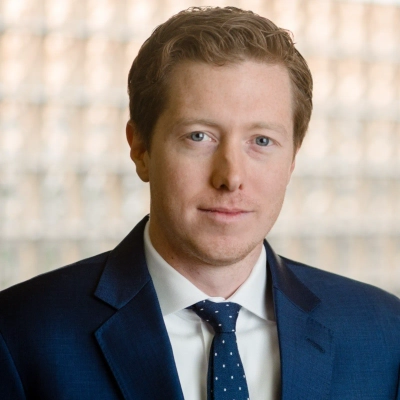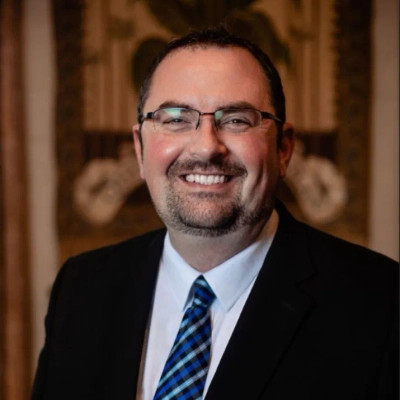16 Unconventional Strategies to Achieve Your Financial Goals"
Financial success often follows unconventional paths, as demonstrated by expert insights gathered in this comprehensive guide to alternative wealth-building strategies. From transforming saving habits into point-based reward systems to leveraging HSA investments for wealth creation, these sixteen proven approaches challenge traditional financial wisdom. The strategies presented offer practical solutions for immediate implementation, backed by real-world expertise from professionals who have successfully applied these methods in various financial contexts.
Building Referral Networks Through Strategic Partnerships
As an entrepreneur, I used an unusual approach to reach my financial goals by creating a referral network based on partnerships instead of spending a lot on advertising. Instead of investing in paid marketing, I looked for other businesses and professionals that served similar customers. I offered them a fair commission or mutual promotion in return for referring clients to me. This method brought in consistent leads without the ongoing expense of ads and helped me build strong industry relationships. Unlike usual strategies that depend on paid ads or cold outreach, this approach was based on trust, teamwork, and long-term benefits. It allowed me to grow naturally, cut down on customer acquisition costs, and gain a good reputation through word-of-mouth. By turning my network into a growth tool, I reached my revenue goals faster and with less financial risk. It was a sustainable way to expand without sacrificing profits or overextending my resources.

Early Monetization Through Services and Guides
When I first launched my blog, rather than waiting for traffic to build up enough for advertising revenue, I took an unconventional approach by immediately offering freelance consulting services and creating simple PDF guides related to my niche. This strategy allowed me to generate cash flow within the first few months instead of waiting a year or more as many content creators do. The early monetization not only supported my financial goals but gave me invaluable insights into my audience's specific needs and pain points. Through direct client interactions and product feedback, I gained market intelligence that informed my long-term content strategy. This approach fundamentally differed from traditional blogging methods where monetization typically comes after building a substantial audience. Looking back, starting with service offerings and small digital products was the foundation that ultimately allowed my blog to grow into a sustainable business much faster than the conventional path.

Quarterly Audits Cut Software Subscription Costs
One unconventional financial strategy I've implemented is conducting quarterly audits of all software and tool subscriptions across our organization. While many companies review these expenses annually or when facing budget constraints, our systematic approach to tracking specific expenses like ChatGPT, SEMrush, and Canva every three months has proven remarkably effective. This regular evaluation process has consistently uncovered unnecessary or redundant subscriptions that individually seemed minor but collectively added up to significant costs. By trimming these excess subscriptions, we've managed to reduce monthly expenses by $1,000-$2,000 without impacting our operational capacity or needing to consider staff reductions. This approach differs from traditional cost-cutting methods that often focus on larger, more obvious expenses while overlooking the cumulative impact of numerous small recurring charges.

Cash Purchase Eliminates Mortgage Interest Burden
I pursued an approach that many considered impossible by saving diligently to purchase my apartment entirely with cash rather than taking on a traditional mortgage. This strategy required significant discipline and patience over several years, but it ultimately saved substantial amounts in interest payments and mortgage fees. The conventional wisdom typically pushes people toward leveraging debt for major purchases, but I found that completely avoiding financing created both financial freedom and peace of mind. Looking back, the temporary sacrifices were worthwhile for the long-term financial security this unconventional approach provided.

Mini Retirement Fund Creates Midcareer Break
The strategy which I took was simple and effective. Instead of a typical goal like "save for retirement", I planned and set a target to take a two-year break from work to travel, learn, volunteer and explore new skills. That was not about stopping income but investing in life experiences and personal growth. I treated it like a mini retirement fund. However, the twisty step was starting the special savings corpus for this break. I automated the monthly transfers, cut the cost of heavy dining, and downsized the subscriptions. Along with that, I took some freelance projects to create a flexible income buffer.
This approach was different from the traditional methods. It focused on short-term freedom and learning investment, unlike the conventional accumulation and long-term wealth.

Transform Saving Into Rewarding Points Game
One unconventional strategy I've used to hit a financial goal was treating my spending like a game rather than a restriction. Instead of the typical "budget and cut costs" approach, I created small challenges for myself—like a month where I only spent money on essentials but tracked every dollar as points, or competing with friends to see who could save the most creatively. Framing it as a challenge made the process engaging, and I found myself more conscious of my habits without feeling deprived.
This approach differed from traditional methods because it focused less on rigid rules and more on behavioral psychology. Instead of dreading spreadsheets or clashing with my lifestyle, I made saving feel rewarding in real time. For example, I would allocate "points" for skipping unnecessary purchases, then use those points to reward myself in low-cost but meaningful ways, like a homemade treat or a fun experience.
The result was surprising: I saved consistently without the usual stress that comes with conventional budgeting, and I became much more aware of my spending triggers. Looking back, this strategy taught me that achieving financial goals isn't just about discipline—it's about creating systems that make the right behavior enjoyable and automatic. It's a mindset shift that transformed how I approach money, and it's something I wish more people considered beyond the standard advice of "cut back and save."

Monetize Idle Digital Screens Through Partnerships
To reach a financial goal faster I once used an unconventional strategy at AIScreen—turn our digital signage network into a passive revenue engine. Instead of relying on SaaS subscriptions I partnered with complementary tech brands to run subtle non-intrusive co-branded campaigns across our demo screens and trial accounts. I monetized product usage moments that were previously idle.
Unlike traditional fundraising or cost cutting approaches this generated recurring revenue without touching customer pricing or equity. It created a win-win—partners got targeted visibility and I offset marketing expenses.
To be transparent I used real-time analytics from our signage dashboards to measure impressions and engagement and negotiated performance based fees. This experiment taught me that growth doesn't always come from scaling sales—it can come from reimagining existing assets and finding value where most see routine operations.

Strategic Planning Builds Financial Confidence
My background in ERISA law taught me to think carefully before making any financial move. I've always believed that a strong plan starts with structure and clarity. Every detail should make sense and be able to hold up under pressure. That kind of thinking has carried over into how I guide clients today.
Instead of rushing into what looks profitable in the moment, I take time to understand the bigger picture. That means focusing on the long-term health of a plan and ensuring every step has a purpose behind it. Once people see that their plan is built on sound reasoning, they start to feel more confident about their decisions.
I've learned that the best results come from slowing down and building carefully. When clients understand why we're doing what we're doing, they feel more connected to the process. It turns the plan into something they trust, not just something they follow.

Quality Control Savings Fund Equipment Purchases
The single financial goal was aggressive: to fully capitalize my business with heavy-duty trucks and specialized equipment without taking on any long-term structural debt. The traditional method is to take out a massive loan based on abstract projections.
The unconventional strategy I used to achieve this financial goal was directly tied to my hands-on labor: I created a dedicated, non-negotiable "Cost-of-Rework" savings account.
In the trade, hands-on mistakes—rework, material overruns, and warranty calls—are treated as operational overhead. I did the opposite. I meticulously tracked the exact financial cost of every hands-on error my crews made. Then, every time a new job was completed perfectly, I calculated the money we saved by avoiding a potential future rework claim, and I deposited that exact amount into a separate capital savings fund.
This approach differed from traditional methods because I was not saving based on abstract revenue growth; I was saving based on verifiable hands-on integrity. My strategy converted every structural success in quality control into immediate, non-negotiable capital growth. The cleaner the hands-on work, the faster the savings grew. The best way to achieve a financial goal is to be a person who is committed to a simple, hands-on solution that prioritizes structural quality as the main source of capital.
Project Milestones Drive Strategic Savings Allocations
Linking savings goals to project milestones rather than income cycles proved unexpectedly effective. Instead of setting aside a fixed percentage of revenue each month, I allocated funds only when a defined objective—like completing a contract phase or reaching a production benchmark—was achieved. This tied saving to tangible progress rather than habit, creating a stronger sense of reward and purpose. Traditional budgeting often treats money management as a static exercise, but this milestone-based structure turned it into an extension of performance tracking. It also made cash flow more resilient during slow periods, since allocations were based on completion, not expectation. Over time, the approach built discipline without rigidity and created a direct link between operational success and financial growth.

Equity Sharing Agreements Expand Land Holdings
When I set out to expand our land inventory without overextending financially, I tried something most wouldn't consider—I partnered with local property owners through equity-sharing agreements instead of direct purchases. Rather than paying full price upfront, we structured deals where landowners received a percentage of future sales revenue once the lots were developed and sold. It gave them a vested interest in the project's success while allowing us to preserve cash flow for infrastructure and marketing.
Traditional financing would have tied up capital in interest and closing costs, slowing growth. This approach created flexibility and mutual benefit instead of debt. It also built stronger community relationships because sellers remained part of the story long after the sale. The lesson was simple but powerful: shared upside can sometimes be more valuable than ownership from day one.

HSA Investments Transform Healthcare Into Wealth
Redirecting unexpected income streams into short-term, high-yield health savings investments proved surprisingly effective. Instead of viewing medical stipends or wellness reimbursements as passive benefits, allocating them into an HSA-linked investment account created a compounding effect that traditional savings lacked. The tax advantages alone amplified returns, but the real benefit came from treating health expenses as part of a broader financial strategy rather than a reactive cost. Each medical decision—from preventive visits to lab work—was planned with financial visibility, transforming healthcare management into a wealth-building discipline. This approach contrasted with conventional budgeting, which often isolates medical spending from long-term growth. Within two years, the strategy covered both annual out-of-pocket costs and a portion of future care expenses, turning an overlooked account into an active investment vehicle that reinforced fiscal stability through health literacy.

Surplus Inventory Bartered For Marketing Assets
Allocating a portion of surplus inventory toward creative barter partnerships delivered stronger returns than discounting or liquidation. Instead of lowering prices, we exchanged high-value art materials with design studios and content creators in return for branded visual assets, product photography, and educational materials. The arrangement generated marketing content worth more than the retail value of the goods traded and preserved cash flow for core operations. Unlike traditional cost-cutting measures, this strategy converted idle stock into tangible brand equity. It also deepened industry relationships, opening new distribution opportunities that wouldn't have emerged through conventional spending or promotion.

Measure Goals In Hours Not Dollars
A surprisingly effective strategy was setting financial goals in hours of freedom instead of dollar amounts. Rather than chasing a target balance, I calculated how many paid hours I needed to cover essentials, then redirected surplus time toward projects with higher long-term yield—consulting, digital assets, or skill-based side ventures. This reframing changed every decision from "Can I afford it?" to "Is this worth my time?"
Traditional budgeting often centers on restriction. The time-based model encourages value optimization instead, revealing how certain habits or expenses drain earning potential without improving quality of life. Over a year, this method produced a 20% increase in discretionary income without cutting lifestyle costs. It built motivation through measurable progress in reclaimed hours, not abstract numbers, creating a more sustainable and personally aligned path to financial growth.

Quality Wardrobe Essentials Reduce Long-Term Expenses
Investing in high-quality wardrobe essentials as long-term assets proved an unconventional but effective financial strategy. Instead of chasing fast fashion or seasonal trends, focusing on timeless, durable pieces reduced overall spending while maintaining a refined aesthetic. Each purchase was treated like a capital investment—evaluated for cost per wear, material longevity, and versatility across settings. Over several years, this approach lowered clothing turnover and eliminated impulsive buying cycles common in trend-driven consumption. The result mirrored a minimalist financial philosophy: fewer, better decisions that compound value over time. Unlike traditional saving or investment methods focused solely on returns, this strategy translated fiscal discipline into lifestyle consistency, demonstrating how intentional consumption can quietly build financial stability.

Quarantine Dead Inventory To Optimize Profits
The typical pursuit of a "financial goal" is usually focused on abstract investing. The unconventional strategy I used to achieve financial goals was entirely operational: The Non-Negotiable Capital Lock on Non-Performing Inventory.
Traditional methods focus on selling high-risk assets quickly to recoup costs. My approach differed by refusing to sell the dead inventory at a loss. I identified a significant amount of slow-moving, non-critical heavy duty trucks hardware that was tying up valuable capital. Instead of selling it cheap, I initiated a Zero-Movement Mandate. I locked that stock away in deep storage and removed it entirely from the balance sheet and the warehouse workflow.
This strategy worked because it forced me to be honest about the asset's true value. It stopped the financial bleeding caused by constant labor and space dedicated to stock that wasn't moving. The capital was effectively quarantined. This freed up my mind and my team to focus solely on the high-turnover OEM Cummins parts—the Turbocharger assemblies and actuators—that generated immediate, reliable profit. The ultimate lesson is: You achieve financial goals not by managing paper assets, but by physically isolating and eliminating the operational waste that is silently eroding your profits.



